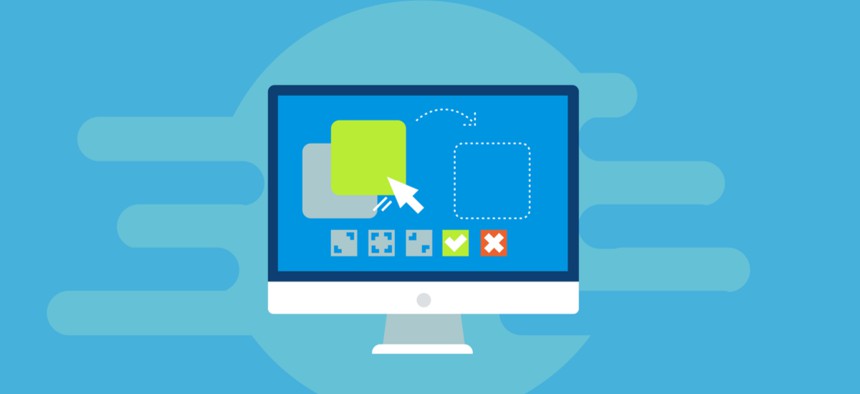Agencies Should Embrace Low-Code for Its Speed and Power

RoseRodionova/Shutterstock.com
Drag-and-drop coding platforms can help agencies that are short on technical staff.
As federal agencies find it increasingly hard to hire technical staff, some are adopting low-code platforms that can help users and citizen developers easily create applications.
Low-code platforms provide a new way to develop applications quickly with a drag-and-drop environment and less code. According to a survey created by Outsystems, the average time to deliver a web or mobile application is five months or longer. Using a low-code platform, applications can be developed in a fraction of the time and can be quickly changed after they have been created.
The Key Features
As per Forrester and Gartner, some of the popular low-code platforms are Outsystems, Mendix, Microsoft PowerApps, Salesforce, and Appian. While these platforms have minor feature differences, the fundamental features of the low-code platforms remain the same:
Data model and relationships: Data modeling is the foundation step of any application created using low-code platform. Low-code platform provides an easy drag-and-drop interface to configure entities or tables and add corresponding fields or columns. These entities are linked with each other using relationships that are usually one-to-one, one-to-many and many-to-many.
User Interface for web and mobile: User interface is built using a UI builder and dragging and dropping UI controls on a canvas providing flexibility in terms of layouts, placement of the labels, placement of the sections without writing code.
Workflow process and business logic: Low-code platforms provide a visual approach to creating the business processes and workflows helping business users in authoring business process. Each step in the process can contain a series of activities (like sending an email, assigning a record, etc.) that are sequenced in a specific order. Business rules or logic, on the other hand, can be used to perform certain operations based on certain conditions. These actions can be validations, setting a certain value, setting visibility, locking/unlocking certain fields, etc.
Native mobile device and offline functionality: Some platforms provide a capability to build a native version of the application for IOS and Android, while others provide a container application which runs and manages all the applications. These platforms also provide the capability to run the applications offline and sync the data once the mobile device is online.
Reporting: Low-code platforms also offer basic reporting and dashboarding capabilities. Some of these platforms go one step further by providing integration with powerful business intelligence platforms like Power BI and Tableau.
Extend with custom code: Most of these platforms support extensibility by writing code using a variety of languages like JavaScript, C#, Java, etc., when out of the box functionality does not meet custom business requirements.
Integration with third-party systems: Most of the low-code platforms support integration with third-party providers and applications to allow authentication and to get or to push data to the third-party systems.
DevOps and monitoring: These platforms provide a capability to manage multiple environments with monitoring capabilities. DevOps capabilities are still in infancy with pending improvements on some platforms.
Low-code platforms are already on the rise. According to Gartner, 65% of the application development will be implemented using low-code platforms in 2024. If not already adopted, it is time to make low-code development as part of your IT strategy.
Prashanth Vijayaraghavan is a technical architect at REI Systems specializing in Microsoft Azure, Office 365 and Dynamics 365.





